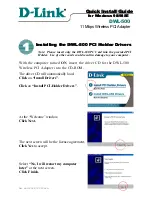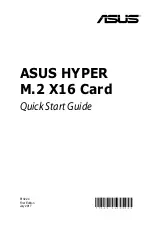
Hardware Connections
3.2.2 Connections to Equipment with 25-Pin AES/EBU D-Sub Connectors
The CBL-AES1605 breakout cables provide 25-pin D-sub connections compatible with industry standard
multi-channel digital equipment connectors. The CBL-AES1605 is a four meter cable that utilizes the
Yamaha pin configuration for the 25-pin D-Sub connector. Digital devices that are compatible with this pin
configuration include converters such as the Lynx Aurora and Apogee Rosetta, digital mixers such as the
Yamaha 02R, Yamaha DM2000 or Mackie D8B, and processors such as the TC Electronics DSP6000.
Devices that use the Tascam pin configuration
are not compatible
with the CBL-AES1605. Digital Audio
products by Tascam, Digidesign, Panasonic and IZ Technology typically use the Tascam pin configuration
for their AES/EBU D-Sub connectors. In these cases, one can have a custom cable made with the correct
pin-out, or use a cable with XLR connections on their equipment that can be interfaced with the XLR
connections on the CBL-AES1604 cable.
The signals associated with each 25-pin D-sub connector depend on which I/O Port on it connected to. I/O
Port A will carry Digital Inputs 1-4 and Digital Outputs 1-4, Port B will carry Digital Inputs 5-8 and Digital
Outputs 5-8. Keep in mind that each AES channel is stereo.
3.3 Clock Connections
In any system with more than one digital device, there can be only one master clock providing
synchronization. Whether you designate the AES16
e
as the clock master (slaving all other devices to it) or
slave the AES16
e
to another clock master, it is important that only a single device act as clock master, to
prevent the occurrence of audible digital errors.
The AES16
e
provides connections that allow for synchronization with external equipment or internal
devices within the computer.
3.3.1 External Clocking
Clock connections to external equipment can be established through word-clock connections or using
AES/EBU digital I/O. Word-clock connections are currently provided only with the CBL-AES1604 cable
set.
With the CBL-AES1604 Cable connected to
I/O Port A
of the AES16
e
, the BNC connector labeled
CLOCK acts a clock
input
. This input supports TTL signal levels and is terminated with 75 ohms of
impedance.
Connect this input to the clock output of an external device and select “External” as the Sample Clock
Source in the Lynx Mixer (see section 6.2).
With the CBL-AES1604 Cable connected to
I/O Port B
of the AES16
e
, the BNC connector labeled
CLOCK acts a word-clock
output
. This output provides a 75-ohm TTL level signal at a frequency that
tracks the sample clock rate of the AES16
e
. Connect this output to the word-clock input of an external
device.
With either the CBL-AES1604 or CBL-AES1605 cable set, the AES16
e
can be synchronized to signals
coming in to Digital Inputs 1-4. Any digital devices that are connected to
I/O Port A
on the AES16
e
can
serve as
a clock source for the AES16
e
. From the Lynx Mixer, “Digital In 1” through “Digital In 4” can be
selected as the active clock source (see section 6.2).
It is worth noting that with the AES16
e
’s SynchroLock Technology, jitter performance between the word-
clock and digital inputs are very similar. Therefore in cases where this is the only external clocking method
available (i.e. with the CBL-AES1605 cable), there will not be a penalty in terms of jitter or overall clock
performance by selecting “Digital In” as the clock source.
AES16e User Manual
Page 24
















































